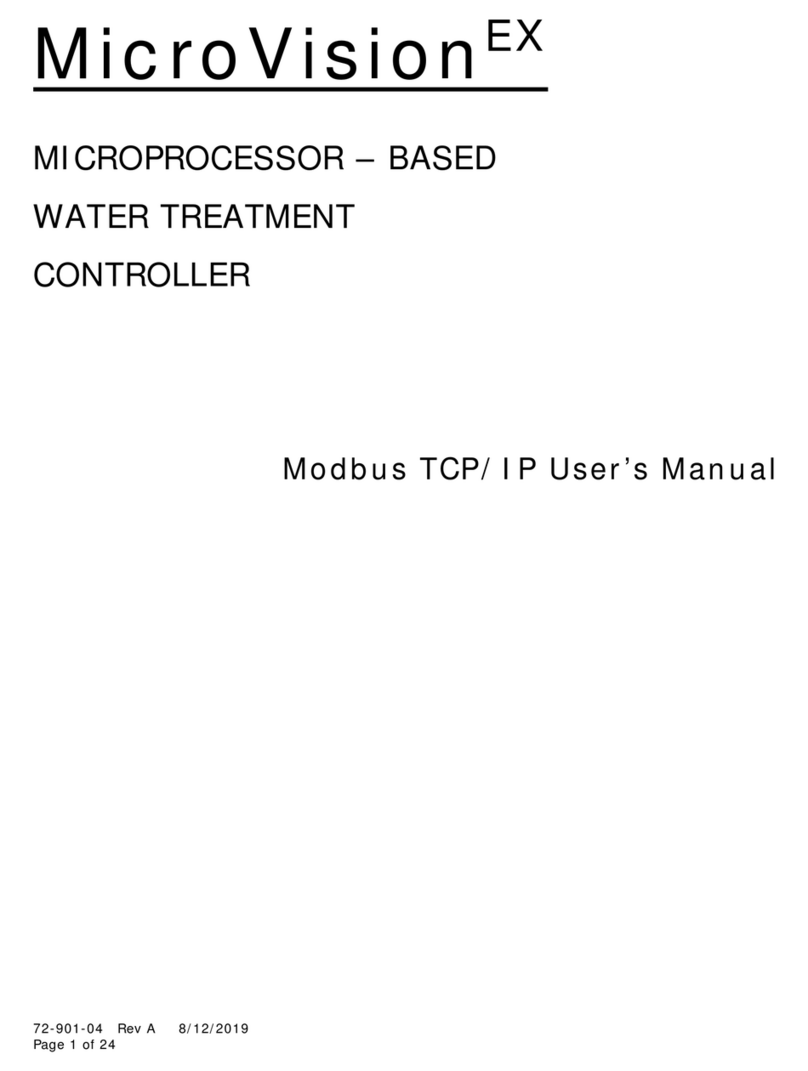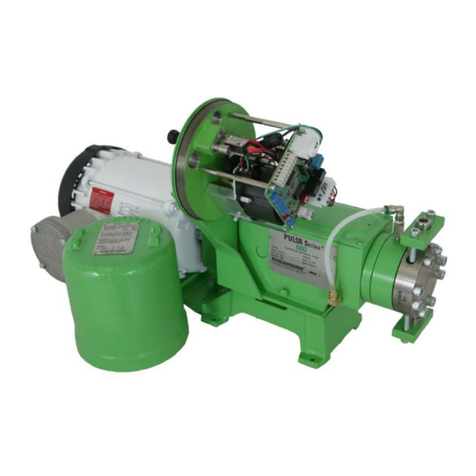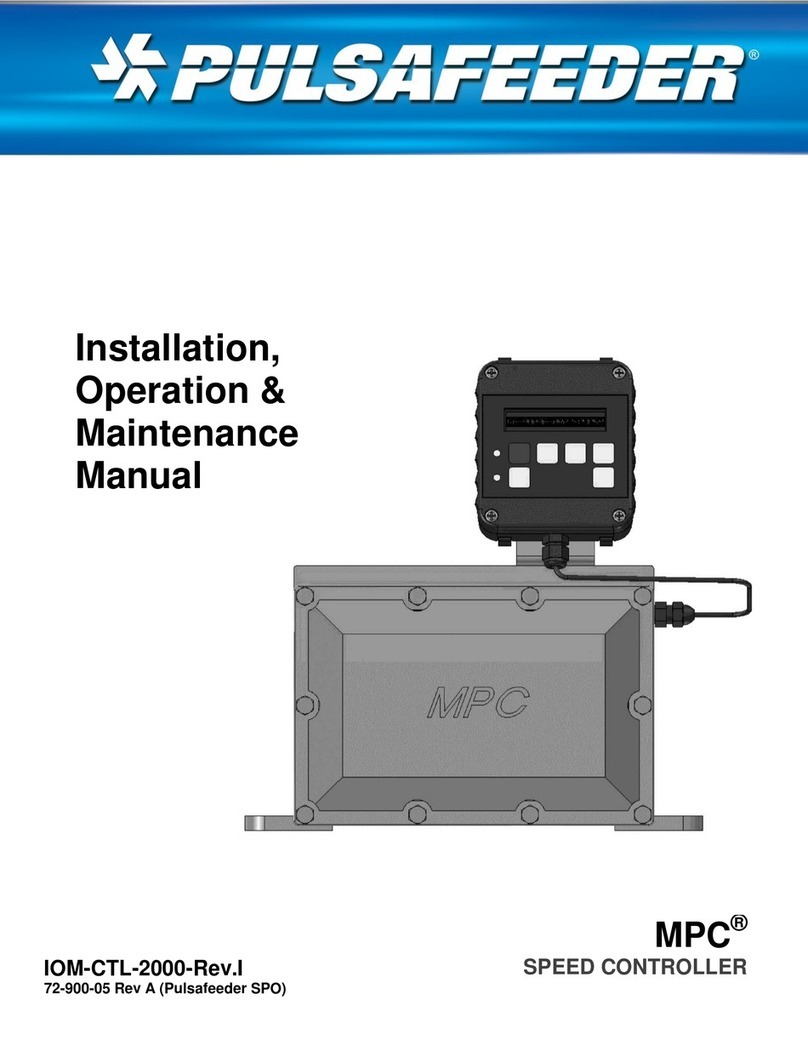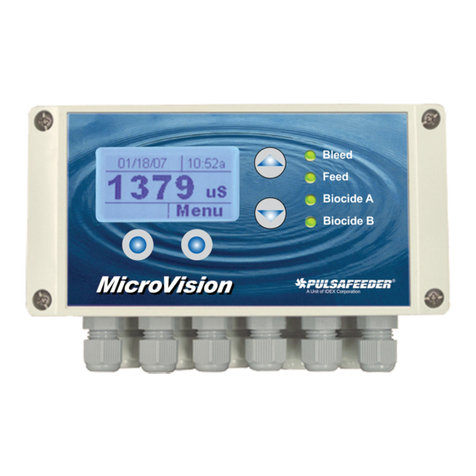
1. Introduction
1.1 General Description
The PULSAmatic actuator converts reciprocating motion of the pump into rotary motion to
turn the pump’s stroke adjustment screw. By selectively engaging either of the two
oppositely oriented, one-way clutches, one of two corresponding nuts hat ordinarily rotate
freely on a “diamond” actuator shaft is blocked form rotation when the shaft moves
longitudinally in one direction. Thus locked, the nut compels the shaft to rotate, thereby
turning the adjustment screw to which it is connected.
The actuator assembly consists of the following major components: the actuator shaft (a
major portion of which is in the form of a diamond screw), tow brake housings, two one-
way clutches, and two helix nuts. Mounted side-by-side, the two brake housings are
concentric to the axis of the actuator shaft. The helix nuts are located between the inner
walls of the brake housings and the surface of the shaft. One nut engages the right-hand
thread of the shaft and other engages the left-hand thread. Each nut rotates within a one-
way clutch.
In operation, the actuator shaft reciprocates along its axis. When the brakes are de-
energized, each nut, along with its respective clutch, is free to rotate in alternation
clockwise and counterclockwise directions as it is driven by grooves in the shaft. Under
this condition, the shaft and adjustment screw do not rotate.
Upon energizing one of the brakes, the corresponding one-way clutch is utilized allowing
the nut to rotate only in one direction, while the shaft is moving longitudinally during the e
discharge stroke of the pump (linear motion of the shaft is now in the opposite direction),
the clutch prevents the nut from rotating, causing the shaft to rotate. This rotation is
transmitted by a mechanism inside the gearbox housing to the pump adjustment screw
so that the piston stroke length is changed. By energizing the other brake, the adjustment
screw is rotated in the opposite direction. To increase or decrease pump output, it is only
necessary to selectively energize either brake.
Rotary motion of the actuator shaft also rotates a sleeve which in turn drives a gear train
through a spur gear pressed on one end of the sleeve. The gear train transfers outputs
for a positional feedback potentiometer and limit switches. A bevel gear mounted on the
opposite side of the drive sleeve is meshed with a hand wheel bevel gear and mechanical
stroke position indicator.
A printed circuit board contains standard and optional control circuits. The incoming
command signal is compared with the internal feedback signal. If the two are equal or
nearly so, no action occurs. If the command signal is greater, one brake is energized,
resulting in a corresponding change in pump output (stroke length) and feedback signal.
If the feedback signal is greater than the command signal, the other brake is energized,
changing the pump output and feedback signal in the reverse direction. When the
feedback signal matches the command signal, stroke length is properly positioned and
adjustment is halted.
The override switch, operable from outside the actuator assembly, disconnects the
brakes from the circuit board to permit manual adjustment using the hand wheel. The
“out” position is for manual operation and the “in” position is for automatic operation.


































